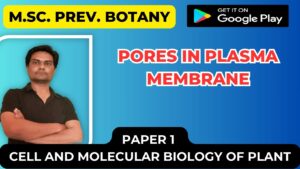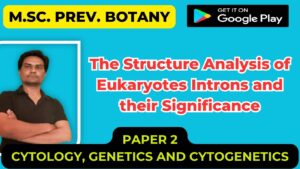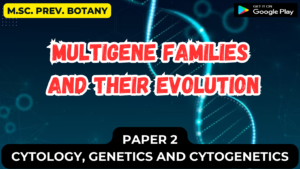![]()
Algae General Characteristics
Algae general characters
- शैवाल या एल्गी (Algae) पादप जगत का सबसे सरल जलीय जीव है, जो प्रकाश संश्लेषण क्रिया द्वारा भोजन का निर्माण करता है।
- शैवालों के अध्ययन को फाइकोलॉजी (Phycology) कहतेहैं।
- शैवाल प्रायः हरित लवक युक्त (cholorophyllous), संवहन ऊतक रहित (Non vascular) स्वपोषी (Autotrophic) होतेहैं।
- इनका शरीर शूकाय सदृश (Thalloid) होता है।ये ताजे जल, समुद्री जल, गर्म जल के झरनों, कीचड़ एवं नदी, तालाबों में पाए जाते हैं।
- कुछ शैवालों में गति करने के लिए फ्लेजिला (Flagella) पाये जाते हैं। बर्फ पर पाये जाने वाले शैवाल को क्रिप्टोफाइट्स (Cryptophytes) तथा चट्टानो पर पाये जाने वाले शैवाल को लिथोफाइट्स (Lithophytes) कहतेहैं।
General Charecteristics of Algae–
- शैवाल की कोशिकाओं में सैल्यूलोज (Cellulose) की बनी कोशिका – भित्ति (Cell wall) पायी जाती है।
- शैवाल में भोज्य पदार्थों का संचय मण्ड (starch) के रूप में रहता है।
- इनको जननांग प्रायः एक कोशिकीय (Unicellular) होता है और निषेचन के बाद कोई भ्रूण नहीं बनाते।
- ये अधिकांशतः जलीय (समुद्री तथा अलवण जलीय दोनों ही) होते हैं।
- कुछ शैवाल नमी युक्त स्थानों पर भी पाए जाते हैं।
- इनमें प्रकाश संश्लेषण के लिए प्रायः हरा वर्णक उपस्थित रहता है।
- शैवालों में तीन प्रकार के वर्णक (Pigment) पाये जाते हैं- हरा (Green), लाल (Red) एवं भूरा (Brown)। इन्हीं तीन वर्णकों के आधार पर शैवालों को तीन प्रमुख वर्गों में विभाजित किया गया है-
(i) क्लोरोफाइसी (Chlorophyceae)– हरा वर्णक
(ii) रोडोफाइसी (Rhodophyceae)- लाल वर्णक
(iii) फीयोफाइसी (Pheophyceae)- भूरा वर्णक
- इनमें प्रजनन अलैंगिक एवं लैंगिक दोनों ही विधियों द्वारा होता है।
MCQs
| Who is known as the Father of Algaeology? A) Linnaeus B) M.O.P. Iyengar C) F.E. Fritch D) Ernst Haeckel Answer: C) F.E. Fritch Who is known as the Father of Indian Algaeology? A) Linnaeus B) M.O.P. Iyengar C) F.E. Fritch D) Ernst Haeckel Answer: B) M.O.P. Iyengar Which of the following is NOT another name for algae? A) Fucus B) Limu C) Tsao D) Moss Answer: D) Moss During which era did algae originate? A) Cambrian Era B) Mesozoic Era C) Paleozoic Era D) Cenozoic Era Answer: A) Cambrian Era Approximately how many species of algae are there? A) 3,000 B) 30,000 C) 300,000 D) 3,000,000 Answer: B) 30,000 Who first used the word ‘algae’? A) Linnaeus B) Darwin C) F.E. Fritch D) M.O.P. Iyengar Answer: A) Linnaeus Which of the following is a special characteristic of algae? A) They have roots, stems, and leaves. B) They have a vascular system. C) They have a thallus-like body. D) They have highly differentiated mechanical tissues. Answer: C) They have a thallus-like body. Most algae are: A) Terrestrial B) Aquatic C) Found in dry habitats D) Parasitic Answer: B) Aquatic Why do algae lack a vascular system? A) They have highly differentiated tissues. B) They are mostly aquatic. C) They have roots, stems, and leaves. D) They have mechanical tissues. Answer: B) They are mostly aquatic. What is the primary component of the algae cell wall? A) Lignin B) Cellulose C) Chitin D) Keratin Answer: B) Cellulose In addition to green pigment, what else can be found in algae? A) Only green pigment B) Other pigments C) No pigments D) Only black pigment Answer: B) Other pigments Which types of stored food are found in algae? A) Starch, Oil, Protein, Fat B) Only Starch C) Only Protein and Fat D) Only Oil Answer: A) Starch, Oil, Protein, Fat What are the types of genitalia in algae? A) Multicellular only B) Unicellular or Multicellular C) Unicellular only D) Nonexistent Answer: B) Unicellular or Multicellular Which cells in algae are capable of producing gametes or sporangium? A) Only apical cells B) Only basal cells C) All cells except apical and basal cells D) No cells Answer: C) All cells except apical and basal cells Which methods of reproduction are found in algae? A) Vegetative only B) Asexual only C) Sexual only D) Vegetative, Asexual, and Sexual Answer: D) Vegetative, Asexual, and Sexual How do algae reproduce asexually? A) By seeds B) By movable and immobile spores C) By flowers D) By fruits Answer: B) By movable and immobile spores What forms of sexual reproduction are found in algae? A) Isogamy, Anisogamy, Heterogamy B) Only Isogamy C) Only Anisogamy D) Only Heterogamy Answer: A) Isogamy, Anisogamy, Heterogamy What type of generation alternation do algae exhibit? A) Haplontic B) Diplontic C) Haplontic and Diplontic D) None Answer: C) Haplontic and Diplontic Which of the following is NOT a habitat where algae can be found? A) Aquatic environments B) Terrestrial environments C) On tree trunks D) In animal bodies Answer: D) In animal bodies What kind of body structure do algae have? A) Differentiated into roots, stems, and leaves B) Thallus-like C) Woody D) Herbaceous Answer: B) Thallus-like Which component is NOT typically found in the cell wall of algae? A) Cellulose B) Hemicellulose C) Chitin D) Pectin Answer: C) Chitin What type of algae reproduction involves the fusion of similar gametes? A) Isogamy B) Anisogamy C) Oogamy D) Parthenogenesis Answer: A) Isogamy What type of reproduction involves the fusion of dissimilar gametes? A) Isogamy B) Anisogamy C) Vegetative reproduction D) Binary fission Answer: B) Anisogamy Which term refers to algae commonly known as ‘pond scum’? A) Limu B) Tsao C) Water moss D) Frog Spittle Answer: D) Frog Spittle Which of the following storage materials is NOT found in algae? A) Starch B) Glycogen C) Oil D) Protein Answer: B) Glycogen What is the primary pigment responsible for photosynthesis in algae? A) Phycocyanin B) Chlorophyll C) Xanthophyll D) Carotene Answer: B) Chlorophyll In algae, what is the term for the life cycle stage where the organism is haploid? A) Diplontic B) Gametophyte C) Sporophyte D) Embryophyte Answer: B) Gametophyte Which term refers to algae known as ‘Fucus’? A) Pond Scum B) Water moss C) Brown algae D) Green algae Answer: C) Brown algae What is the approximate number of genera of algae? A) 300 B) 1800 C) 30,000 D) 300,000 Answer: B) 1800 Which algae reproduction method involves fragmentation of the thallus? A) Asexual reproduction B) Sexual reproduction C) Vegetative reproduction D) Parthenogenesis Answer: C) Vegetative reproduction In the alternation of generations, what is the diploid phase called? A) Gametophyte B) Sporophyte C) Zygote D) Thallus Answer: B) Sporophyte What kind of reproductive structure can be both movable and immobile in algae? A) Gametes B) Spores C) Zygotes D) Spermatozoids Answer: B) Spores Which of the following is NOT a form of sexual reproduction in algae? A) Isogamy B) Anisogamy C) Heterogamy D) Sporulation Answer: D) Sporulation What structural characteristic is generally absent in algae? A) Differentiated tissues B) Thallus-like body C) Cellulose in cell walls D) Chlorophyll pigments Answer: A) Differentiated tissues What is the term for the study of algae? A) Phycology B) Mycology C) Bryology D) Pteridology Answer: A) Phycology Which of the following best describes the cellular composition of algae? A) All are unicellular B) All are multicellular C) They can be unicellular or multicellular D) None of the above Answer: C) They can be unicellular or multicellular What pigment gives some algae a brown color? A) Chlorophyll a B) Phycocyanin C) Fucoxanthin D) Phycoerythrin Answer: C) Fucoxanthin Which reproductive method in algae involves the production of spores? A) Sexual reproduction B) Vegetative reproduction C) Asexual reproduction D) All of the above Answer: C) Asexual reproduction Which type of algae is commonly referred to as ‘water moss’? A) Green algae B) Brown algae C) Red algae D) Blue-green algae Answer: A) Green algae What type of reproductive cycle do algae exhibit when they have both haploid and diploid stages? A) Haplontic B) Diplontic C) Heteromorphic alternation of generations D) Isomorphic alternation of generations Answer: C) Heteromorphic alternation of generations |



